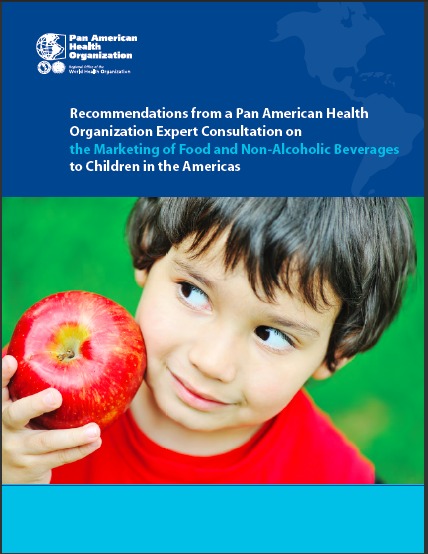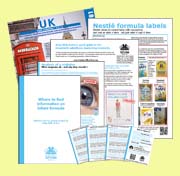PAHO Expert recommendations on Non-Alcoholic Beverages to Children in the Americas
 PAHO Expert recommendations on Non-Alcoholic Beverages to Children in the Americas
PAHO Expert recommendations on Non-Alcoholic Beverages to Children in the Americas
This new report has some excellent recommendations.
http://new.paho.org/hq/index.php?option=com_docman&task=doc_download&gid=16792&Itemid=.
SUMMARY OF THE RECOMMENDATIONS:
1. Develop a policy on food marketing to children, with the Ministry of Health, or an associated department, agency, or institute, taking leadresponsibility for the process.
2. Adopt the policy objective of reducing children’s exposure to marketing of foods high in fats, sugars, or salt, with the goal of reducing risks to child health.
3. Start the policy process by building and maintaining consensus within the government on the need for such a policy.
4. Engage with other stakeholders to increase knowledge and awareness of the adverse impact of food marketing on children.
5. Convene a government-led stakeholder working group (SWG) as the entity responsible for policy development.
6. Request that the SWG define the scope of the policy in terms of what is meant by each element of “marketing food to children,” which this Expert Consultation Group defines in Recommendations 7–10.
7. “Marketing” should be defined as all marketing techniques through all communication channels, including messages disseminated in schools and other places where children gather and spend time.
8. Marketing “to” children should be defined as marketing directed exclusively to children, marketing with a specific appeal to children, and, in measured media, marketing intended for adults but viewed by
children.
9. “Children” should be defined as persons under 16 years of age.
10. “Food” should be defined to include both foods that should be marketed (foods which children should consume more of as part of a healthy diet) and foods that should be banned, according to maximum acceptable nutrient criteria detailed in this recommendation.
11. Complete the aforementioned actions in a time frame of no more than 18 months.
12. Implement the policy through legal provisions.
13. Designate a body to monitor the effects and effectiveness of the policy on children’s exposure to marketing, using a uniform set of indicators.
Recommendation 12
The policy should be implemented through legal provisions. Some countries may opt to start off the process with a government-led self-regulatory approach, although this is not specifically recommended. Whatever
approach is taken, the lead agency should report on the effects and effectiveness of the policy within two years
of implementation.
Rationale A legal approach is recommended for the following reasons:
• Children are inherently vulnerable to the persuasive intent and power of marketing messages. Governments have a responsibility to protect the health of children.
• Experiences in the Americas suggest that selfregulatory and voluntary approaches are too limited to meet the objective of reducing exposure sufficiently to reduce risk to children.
• Food and beverage companies which participate in voluntary pledges and commitments use
a variety of definitions of food marketing to children, suggesting that government intervention is needed to enable uniform implementation (as recommended by the WHO Set of Recommendations). Defining food marketing to
children through legal mechanisms also provides food and beverage companies with more certainty and a “level playing field.”
Legal mechanisms provide a framework for the policy to be legally enforced by the state.
• Even with a legal approach, countries have the option of improving and monitoring the effectiveness of self-regulatory/voluntary measures in order to determine the most effective approach
to protect children from marketing of foods high in fats, sugars, or salt.
| Attachment | Size |
|---|---|
| PAHO Experts Food Marketing to Children.pdf | 5.41 MB |
- Login to post comments






